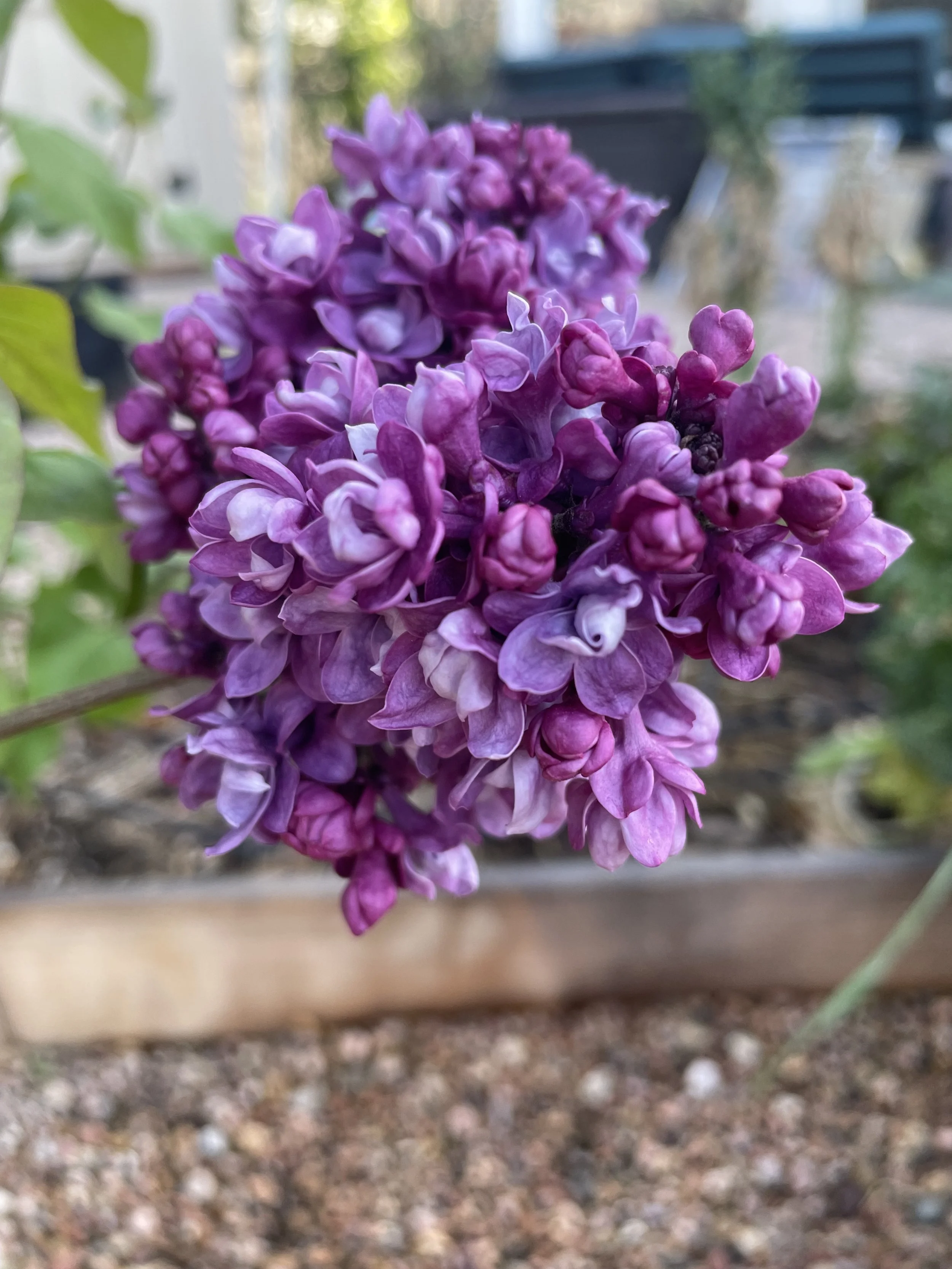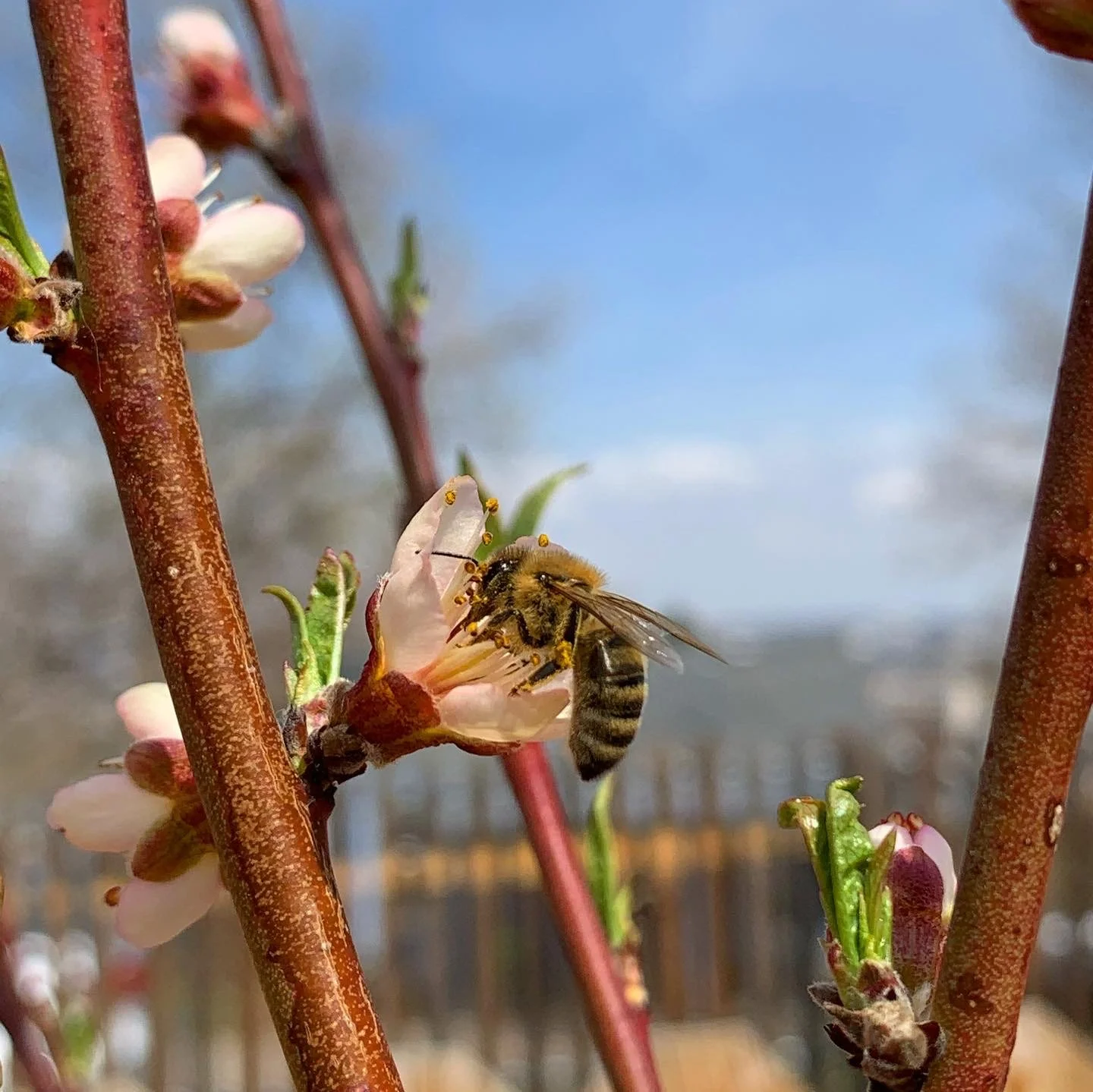April Garden Checklist
It’s officially spring in the Northern Hemisphere and we’re eager to get the garden going!
Below is a checklist we use to keep us on track for a rocking spring garden. Disclaimer, this advice applies to our agricultural zone: 6a/5b.
Early/Mid April (1-15th) - Indoors
Start flowers such as Zinnias, Calendula, Marigold, Cleome, Strawflower, and Nasturtium
In most zones, you’d direct sow Nasturtiums, but we’ve had better luck starting indoors and transplanting; just be sure to avoid too much root disturbance
Start herbs such as basil, lavender hyssop, chamomile, and shiso
Pot up tomatoes, peppers, eggplants
Fertilize seedlings
Chit potatoes and prep for planting
Early/Mid April - Outdoors
Plant cold-tolerant spring flower starts like pansies and snapdragons
Pull weeds
Direct sow spinach, arrugula, lettuce, radishes, and turnips
Once the soil temperature reaches 60 degrees, sow root veggies: carrots, beets, parsnips, and daikon
Check garden structures for needed repair
Plant summer flowering bulbs
Transplant onions, shallots, and leeks
If started indoors, begin hardening off cool weather veggies like kale, cabbage, lettuce, brussels sprouts, cauliflower and celery
Mid/Late April (16th-30th) - Indoors
Confirm garden plan: take inventory of seedlings and identify any gaps that require purchasing transplants
Fertilize seedlings
Start backup pumpkins, melons, cucumbers, winter and summer squash
We typically direct sow these, but also start a few reserves indoors to ensure pests don’t destroy them all
Mid/Late April - Outdoors
Pull weeds
Confirm hail infrastructure is in place and no repairs are needed
Move last year’s garden leftovers to the parking lot pile
many species of native bees don’t emerge until May, so we avoid cleaning up our garden as long as possible. If we have to remove something for spring planting, we add it to a pile in the corner of the yard to give everyone a chance to hatch in the Spring
Transplant hardened off cool weather veggies like kale, cabbage, lettuce, brussels sprouts, cauliflower and celery
Begin hardening off all remaining transplants once temps are regularly in the high 60s
Plant seed potatoes
Direct sow peas, carrots, radishes, and beets for succession planting
Direct sow chard, parsley, and cilantro
Divide and transplant perennials
Prune rose bushes (late April)
Double check irrigation system placement
Build tomato infrastructure
Place order for bulk mulch
We wait until late May to apply mulch, as applying earlier can keep the soil from warming when applied in spring
There you have it!
April is a busy month, but also one of the most exciting times in the garden: the promise of what’s to come, lilacs and fruit trees blooming, bees buzzing around, and the culmination of months of seed starting work make it a favorite time of year.


